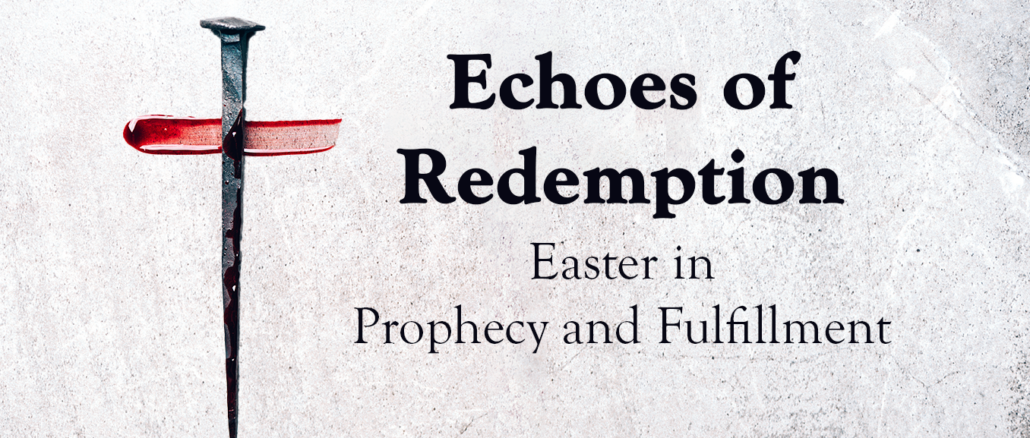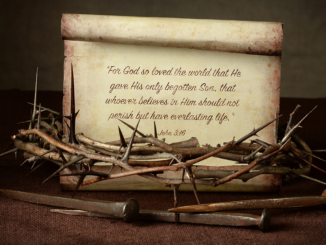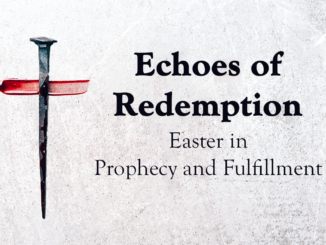
Read Exodus 12
As Easter approaches, we are reminded of the incredible love and sacrifice of Jesus Christ. In the midst of the Easter story lies the profound symbolism of the Passover Lamb – a symbol deeply rooted in the Old Testament yet finding its ultimate fulfillment in the person of Jesus Christ.
In Exodus 12, we witness the culmination of God’s promise to free His people from slavery in Egypt. As the Israelites prepared to depart, God instructed them to take a lamb without blemish, slaughter it, and mark the doorposts to their home with its blood. This act of faith served as a sign for the Angel of Death to pass over their homes, sparing their firstborn from the final plague.
Centuries later, during the time of Jesus, the Jewish people continued to observe the Passover celebration. Little did they realize that the lamb slain annually since the time of Moses was a foreshadowing of the true Passover Lamb who would come to take away the sins of the world.
In the New Testament, we find the fulfillment of this prophetic imagery in the person of Jesus Christ. John the Baptist, upon seeing Jesus, declared, “Behold, the Lamb of God, who takes away the sin of the world!” (John 1:29). Jesus, the sinless Son of God, willingly offered Himself as the ultimate Passover Lamb, fulfilling the requirements of the law and providing a way for humanity to be reconciled to God.
Just as the blood of the lamb protected the Israelites from God’s judgment in Egypt, so too does the blood of Jesus Christ offer redemption and salvation to all who believe in Him.
Just as the blood of the lamb protected the Israelites from God’s judgment in Egypt, so too does the blood of Jesus Christ offer redemption and salvation to all who believe in Him. Through His sacrificial death on the cross, Jesus became the perfect atonement for our sins, securing forgiveness and eternal life for those who place their trust in Him.
The parallels between the Passover Lamb and Jesus Christ are striking. Just as the Israelites were instructed to choose a lamb without blemish, Jesus was the spotless Lamb of God, without sin (1 Peter 1:19). The blood of the Passover Lamb was a sign of protection and deliverance for the Israelites, while the blood of Jesus serves as a sign of our redemption and salvation (Romans 3:25). And just as the Passover Lamb was sacrificed to secure the Israelites’ freedom from slavery, so too was Jesus sacrificed to secure our freedom from the bondage of sin and death (Hebrews 9:28).
As we reflect on the significance of the Passover Lamb this Easter season, let us remember the depth of God’s love demonstrated through His Son, Jesus Christ. Just as the Israelites trusted in the blood of the lamb for their salvation, so too must we trust in the finished work of Christ on the cross for ours.
The Apostle Paul writes in 1 Corinthians 5:7, “For Christ, our Passover lamb, has been sacrificed.” Through His death and resurrection, Jesus conquered sin and death, offering us the gift of eternal life. As we celebrate Easter, we rejoice in the victory won for us by the Passover Lamb.
May we never forget the price that was paid for our redemption. May we continually marvel at the depth of God’s grace and mercy extended to us through Jesus Christ. And may we live each day in grateful obedience to the One who loved us and gave Himself for us, the true Passover Lamb who was slain for our sins.
Through His death and resurrection, Jesus conquered sin and death, offering us the gift of eternal life. As we celebrate Easter, we rejoice in the victory won for us by the Passover Lamb.
Reflective Questions:
- Reflect on the symbolism of the Passover Lamb in Exodus 12. How does the imagery of the lamb without blemish point to Jesus Christ as the perfect sacrifice for our sins? Consider the significance of the blood of the Passover Lamb as a sign of protection and redemption. How does Jesus’ sacrifice on the cross serve as our ultimate protection from sin and death?
- Reflect on John the Baptist’s proclamation of Jesus as the Lamb of God. How does this title deepen your understanding of Jesus’ role in bringing salvation to the world?
- As you contemplate the fulfillment of the Passover Lamb in Jesus Christ, take a moment to thank Him for His sacrificial love and the freedom He offers. How does His sacrifice inspire you to live a life of gratitude and obedience?



